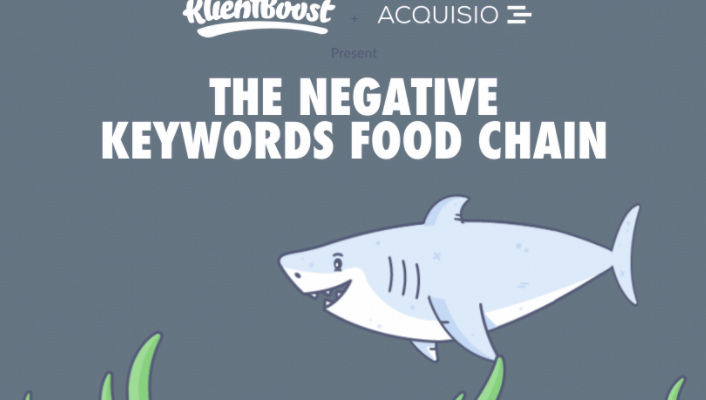EDITOR’S NOTE: This marketing infographic is part of KlientBoost’s 25-part series. Subscribe here to enjoy a new gifographic once a day for the remainder of December.
Picture this: a huge blue whale swims through the blue ocean, and yeah, he’s massive and can prey on anything smaller than him, but does he really want to?
Nahh… Big blue prefers to eat krill and copepods (tiny little guys) and uses his baleen plates to filter through the big sea creatures to let only the small stuff in.
But why should you care about marine biology?
Well, the baleen of the blue whale acts like a negative keyword filter and keeps all the unwanted extraneous keyword searches out of your PPC campaigns.

Or eats other blue whales, cause that happens. GIF source
So you don’t have to pay for clicks that never convert.
Why waste valuable ad dollars on mismatched searches when you can use negative keywords to filter through your visitor’s intent?
Blocking out certain search terms in your PPC campaigns can not only help you, but it can help your visitors, too.
Wondering which negative keywords to add?
Use Google’s or Bing’s search term report to show you what your visitors are searching for to trigger your ads and base your negative keywords on that.
By using the varying levels of negative keywords, you can better match up what your visitors are looking for with what you have to offer.
To help you identify which negative keyword formats to use in your campaigns, we’ve partnered up with Acquisio to bring you some ideas you can start using today.

Great White Shark – Universal Negative Keyword List
At the most inclusive level, the account level, terms that you place on your universal negative keyword list will get blocked for all of your campaigns.
The ideal time to use the universal negative keyword list is if certain search terms will not apply to your PPC account offerings at all.
These are examples of terms that could be tacked onto the tail end of your targeted keywords, making the whole search term unit irrelevant to your site:
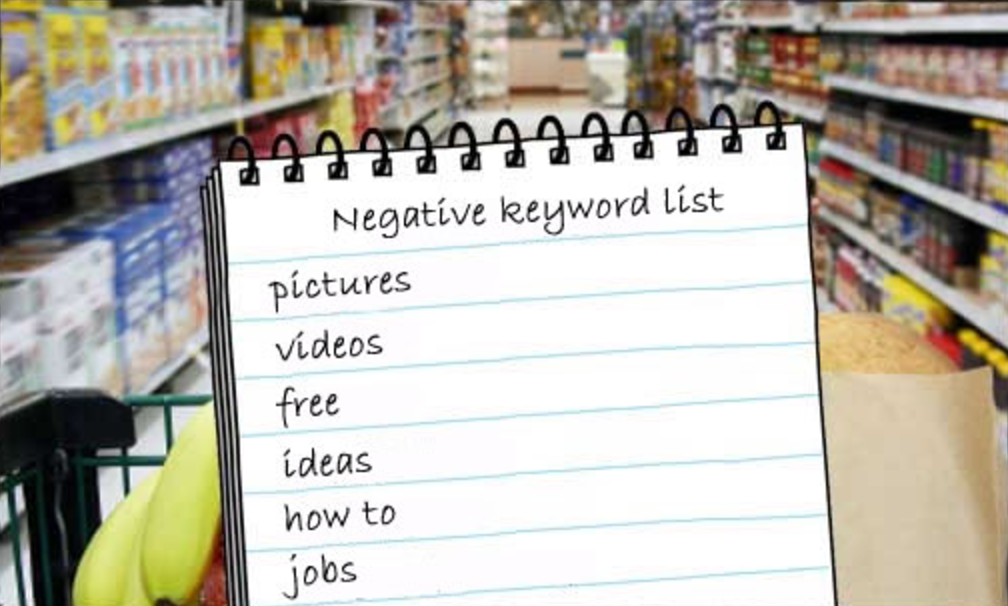
Your targeted keywords + any of these could make it a mismatch. Image source
Here’s an example of how you would add negative keywords to all your campaigns at the universal level:
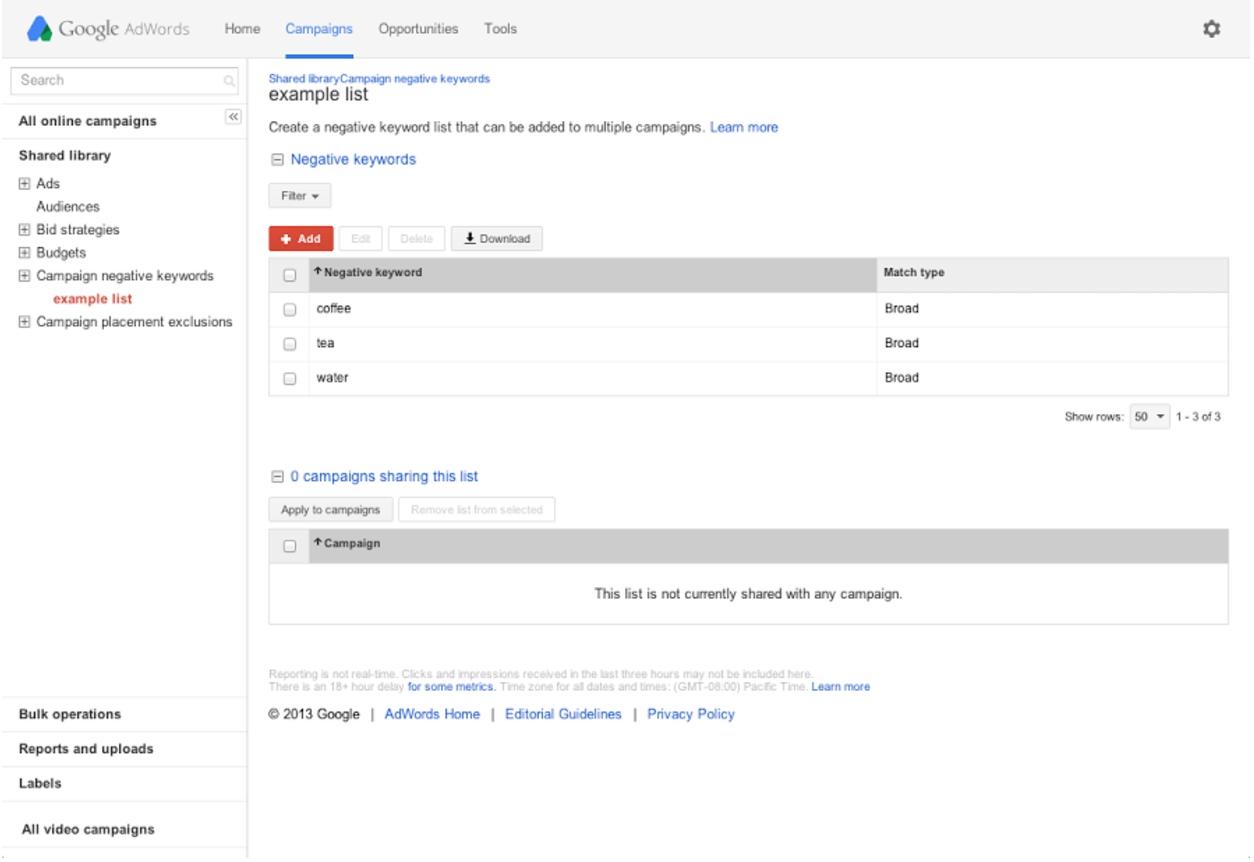
Apply the list to all campaigns.
Sea Lion – Multi-Campaign Level Negative Keyword List
One step below the universal level is the multi-campaign level, where terms placed on this type of negative keyword list will exclude terms for your conjoined campaigns.
Filtering search terms at this level applies to campaigns for groups or types of product categories. You can attach negative keyword lists to multi-campaigns, which won’t affect all of your campaigns.
Here’s an example of two campaigns separated by product type offering for a generic electronics store:
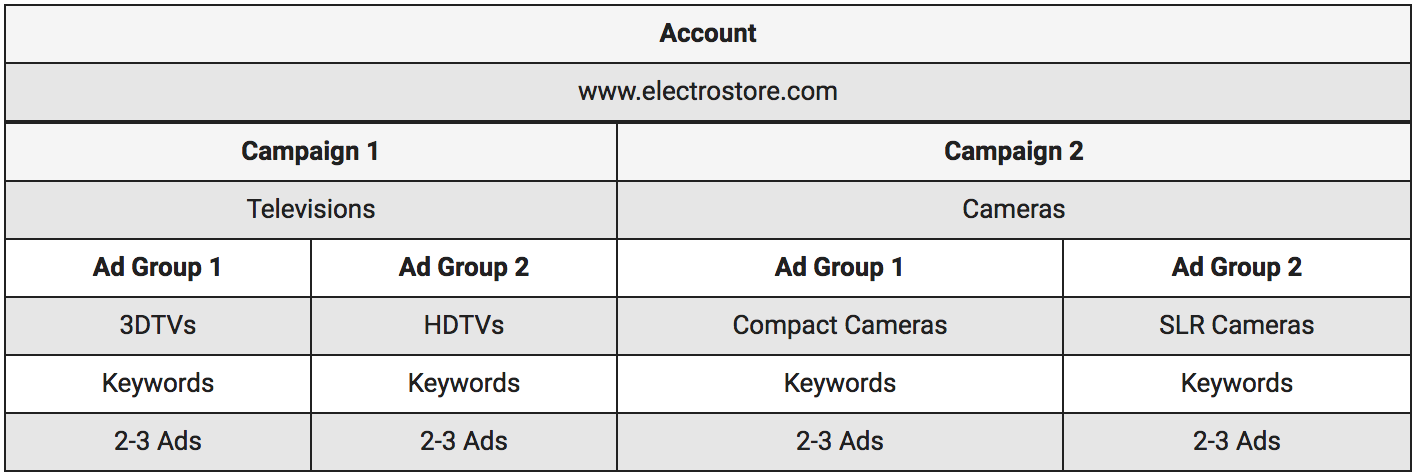
With multi-campaign level negative keywords you could apply the list to both campaigns. Image source
Here’s how you would apply a single negative keyword list across multiple campaigns:
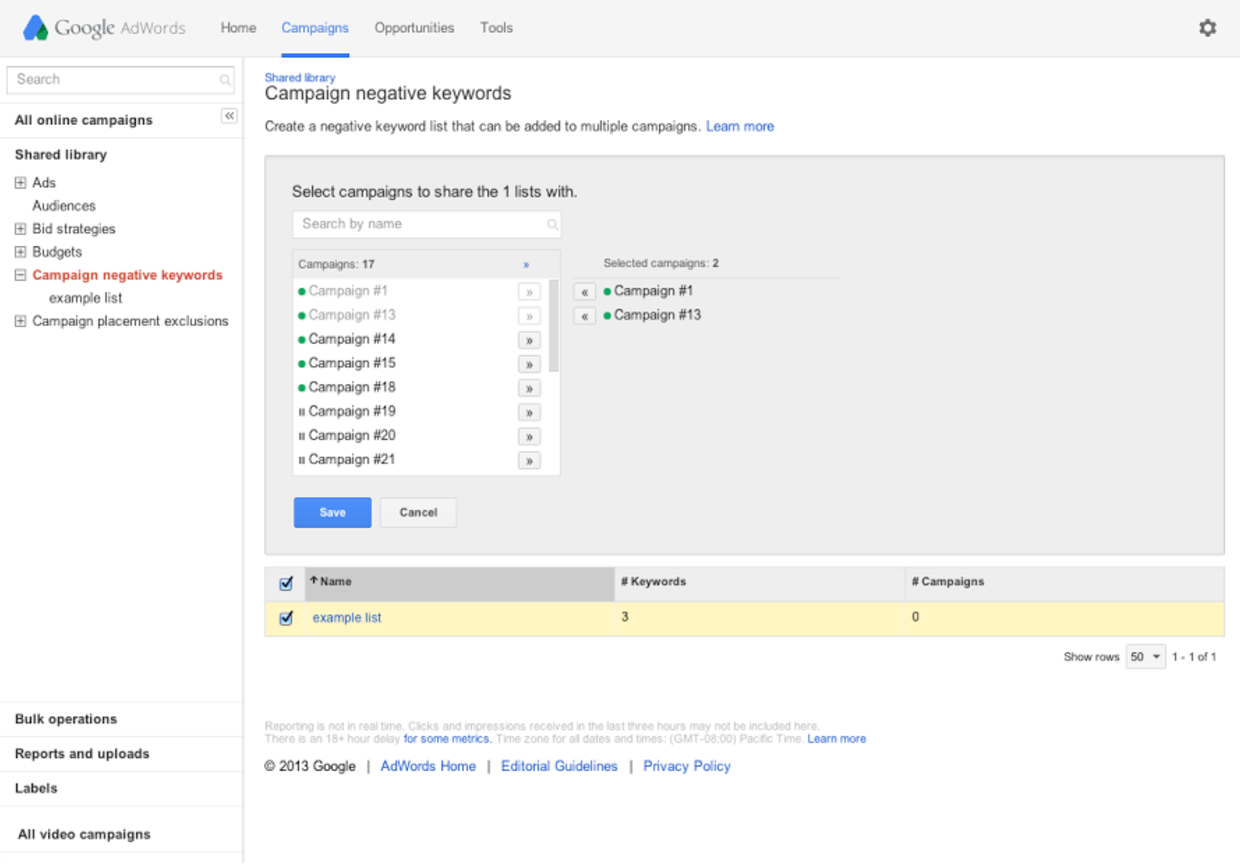
One negative keyword list, multiple campaigns.
This creates a spot for negative keywords that you don’t want to apply universally to all your campaigns, but do want to apply to multiple campaigns.
Octopus – Individual Campaign Level Negative Keywords
Negative keywords placed on individual campaign level negative keyword lists will be filtered for that specific ad campaign only.
This strategy can work for specific products types and offerings within your site, and won’t affect how you filter negative keyword for your other campaigns.
In the same way that you categorize your ad campaigns by similar ad groups, you would be able to exclude certain negative keywords for each campaign.
Crab – Ad Group Level Negative Keywords
Adding negative keywords to your ad group level will affect that particular ad group only.
The ad group level affects more specific keywords that are closely related within a product/service type.
For example, these specific tea types would be grouped within a brew tea ad group:
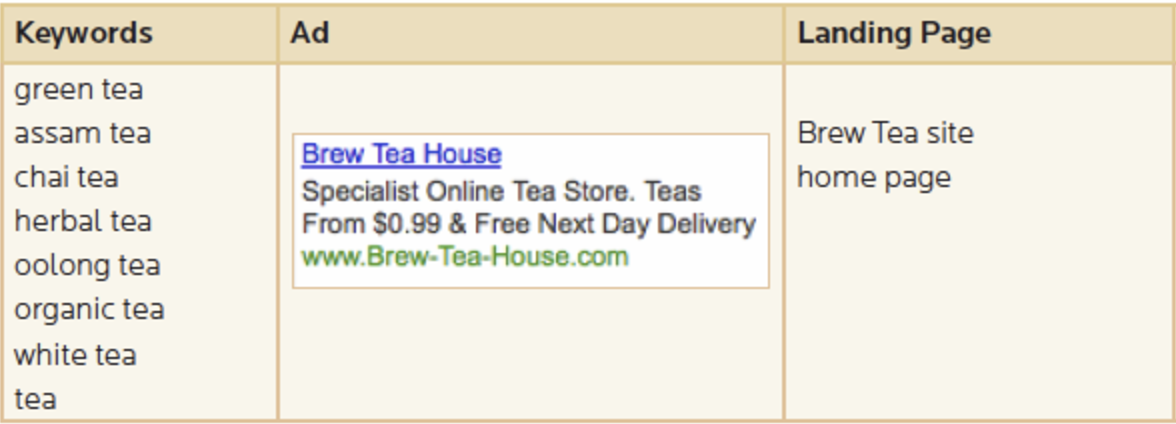
Focusing on negative keywords at the ad group level can be an effective tactic to use when you want to avoid cannibalization between your ad groups.
Sometimes shorter tail keywords can steal impressions from your longer tail keywords.
This is especially true if you take advantage of Single Keyword Ad Groups.
By placing negative keywords at the ad group level and correlating match types you can prevent this from happening.
For extra granularity and control, use ad group level negative keywords to correspond search terms with exact keywords, like in this example:
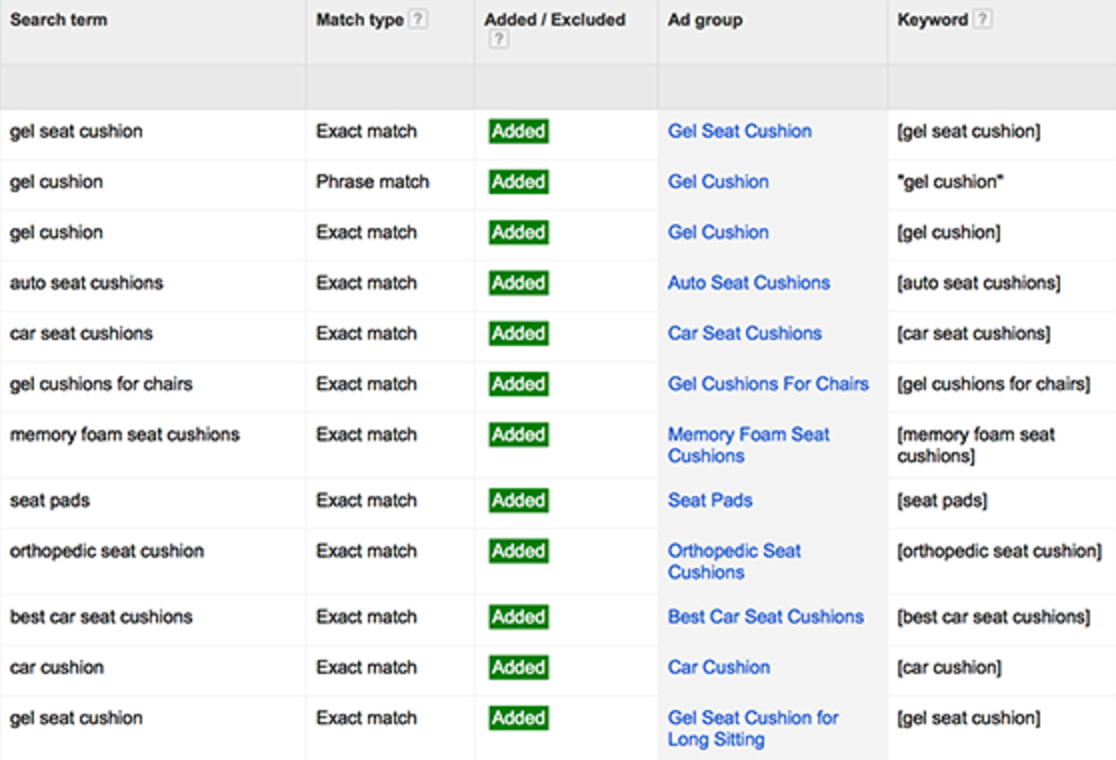
Search terms correspond with the keywords. Image source
When there’s a discrepancy between the keyword and search term, you can address the issue at the ad group level and add search terms as an ad group level negative keyword (more details on this later).
Clam – Negative Keyword Match Types
Not only can you separate your negative keyword lists by account, campaign and ad group levels, but you can also filter through different match types.
Negative broad, negative phrase and negative exact are three different match types that you can apply to your negative keyword lists to give you even more accuracy in your exclusions.
Here’s a silk scarves example of different search queries that would be ruled out depending on the three negative keyword match types:
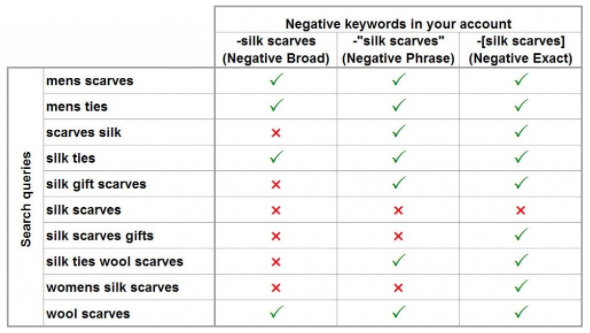
Which match types suit your negative keywords? Image source
ConversionXL recommends separating out your match types and splitting them into separate groups for more control over your PPC account.
To take it a step further, you can grab your exact match keywords and use those as negative keywords in your phrase match ad group (if you split up ad groups by match types).
This will give you the highest most granular level of control over your negative keywords.
Closing Thoughts
Filtering through all those miscellaneous search terms with negative keywords can help you block out visitors’ mismatched searches.
Negative keyword options allow you to better match your visitor’s intent with what you’re trying to sell.
You can set up different negative keyword terms at various account, campaign and ad group levels to maximize your PPC performance potential.
Since there are hundreds of negative keywords that you can apply to multiple PPC accounts, campaigns, or ad groups, starting off with these tactics from the get go will help you save time and filter out those unwanted visitors like a killer whale.
That’s the negative keyword food chain in action.
